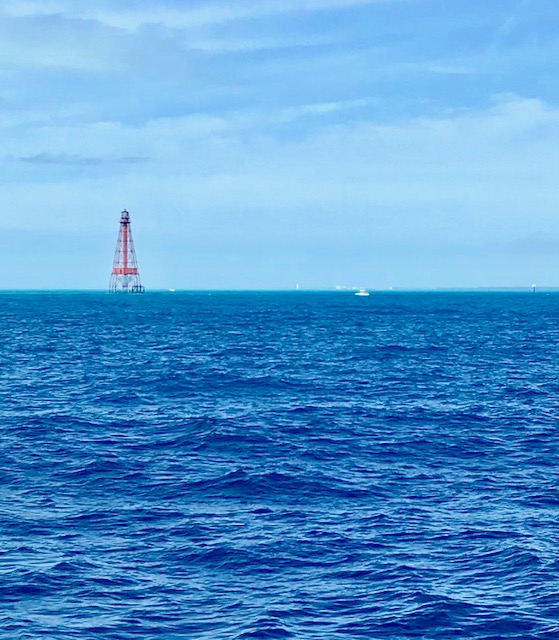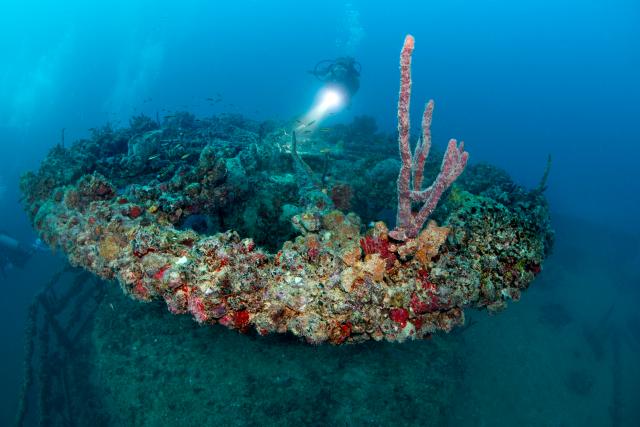A Marathon Reef and Wreck Diving Report
Professional dive operators continue to assess the condition of coral reefs and shipwrecks several months after Hurricane Irma’s passage through the Florida Keys. They encourage recreational divers to return to the ocean for amazing experiences such as rediscovering the following Middle Keys highlights.
The wreck of Thunderbolt, a 188-foot cable layer that later served as a research vessel to explore the electrical energy of lightning strikes, remains an iconic dive in approximately 120 feet of water 6.5 miles south of Duck Key Channel.
Despite shifted sand around the bottom-resting hull, Thunderbolt remains easily navigable in one dive, albeit an excursion for advanced or wreck-certified divers. Only one of two submerged mooring balls remains positioned, affixed at the ship’s stern. The “bow ball” is in need of replacement.
“T-bolt’s” superstructure starts at 75 feet, at the top of the observation deck, and visibility has been reported from 50 feet to “outstanding” (80-plus feet) since Irma. Large angelfish and barracuda patrol its decks and the giant cable spool at the bow, while a goliath grouper can be spotted in/out of the wheelhouse — an easy and intriguing swim-through. Jacks, cobia, tarpon and a variety of deep-water pelagic creatures often are seen.
Despite some topographic changes to reefs located in the protected waters of the Florida Keys National Marine Sanctuary, tidal cycles and ocean currents are slowly correcting the displacement of sand from deeper waters onto shallow areas of the patch reefs.
Divers report a significant abundance of marine life — notably turtles, sharks and stingrays — and several days’ worth of 60-foot-plus visibility in February, despite the winter season’s typically windy conditions.
At Sombrero Reef, marked by a large lighted tower, divers comb spur and groove formations. Visibility varies from cloudy to clear, as the sand and silt that Irma’s strong currents deposited still blankets areas of the reef or remains as sediment suspended in the water.
Divers with the Florida Keys National Marine Sanctuary have reported that Sombrero Reef sustained substantial force from storm waves that dislodged large pieces of coral, and large abraded sponges, a dietary staple of some species of sea turtles. French angelfish and huge schools of grunts are still commonly sighted, sliding back and forth in a gentle tidal surge.
A very worthwhile shallow dive site in the Middle Keys, dubbed Flagler’s Barge, teems with sea life. Goliath groupers join massive schools of fish around the metal structures, thought to be the remnants of a barge platform that local lore claims to be from Henry Flagler’s Florida Keys Over-Sea Railroad.
Florida Keys diving: fla-keys.com/diving
Florida Keys visitor information: fla-keys.com or 800-FLA-KEYS (352-5397)
Social: Facebook • Twitter • Instagram • Youtube • Keys Voices blog

Sombrero Reef is marked by a large lighted tower.


